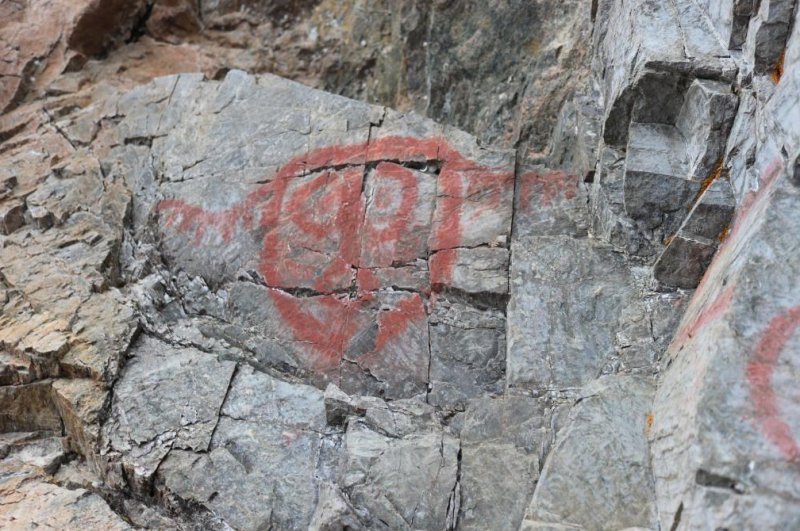Lab tests suggest early hunter gatherers purposefully heated aquatic algae to produce ochre pigments used in ancient rock art pictographs. Photo by University of Missouri
Nov. 20 (UPI) -- New research suggests early hunter-gatherers in North America purposefully produced ochre, the vivid red paint used in rock art pictographs all over the world, by heating bacteria.
"Ochre is one of the only types of material that people have continually used for over 200,000 years, if not longer," lead researcher Brandi MacDonald, an expert in ancient pigments at the University of Missouri, said in a news release. "Therefore, we have a deep history in the archeological record of humans selecting and engaging with this material, but few people study how it's actually made."
To better understand how hunter-gatherers sourced the red pigment used in the rock art along the shores of British Columbia's Babine Lake, scientists used modern technology to heat a solitary grain of ochre and study its reaction to temperature change under a powerful electron microscope at Missouri's Electron Microscopy Core.
Ochre is sourced from aquatic, iron-rich bacteria. The latest lab tests suggest early hunter gatherers had to purposefully and precisely heat the bacteria to a temperature between 750 and 850 degrees Celsius to harvest the pigment particles.
Scientists described the results of their experiments this week in the journal Scientific Reports.
"It's common to think about the production of red paint as people collecting red rocks and crushing them up," MacDonald said. "Here, with the help of multiple scientific methods, we were able to reconstruct the approximate temperature at which the people at Babine Lake were deliberately heating this biogenic paint over open-hearth fires."
The findings suggest early rock art pictographs weren't the products of accidents and serendipity. Instead, the materials for ancient paintings were purposefully procured.
"Today, engineers are spending a lot of money trying to determine how to produce highly thermo-stable paints for ceramic manufacturing or aerospace engineering without much known success, yet we've found that hunter-gatherers had already discovered a successful way to do this long ago," McDonald said.















